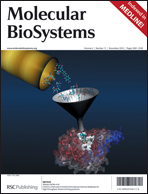The role of mechanistic modeling and systems biology in molecular medicine remains unclear. In this study, we explored whether uncertain models could be used to understand how a network responds to a therapeutic intervention. As a proof of concept, we modeled and analyzed the response of the human coagulation cascade to recombinant factor VIIa (rFVIIa) and prothrombin (fII) addition in normal and hemophilic plasma. An ensemble of parametrically uncertain human coagulation models was developed (N = 437). Each model described the time evolution of 193 proteins and protein complexes interconnected by 301 interactions under quiescent flow. The 467 unknown model parameters were estimated, using multiobjective optimization, from published in vitro coagulation studies. The model ensemble was validated using published in vitro thrombin measurements and thrombin measurements taken from coronary artery disease patients. Sensitivity analysis was then used to rank-order the importance of model parameters as a function of experimental or physiological conditions. A novel strategy for the systematic comparison of ranks identified a family of fX/FXa and fII/FIIa interactions that became more sensitive with decreasing fVIII/fIX. The fragility of these interactions was preserved following the addition of exogenous rFVIIa and fII. This suggested that exogenous rFVIIa did not alter the qualitative operation of the cascade. Rather, exogenous rFVIIa and fII took advantage of existing fluid and interfacial fX/FXa and fII/FIIa sensitivity to restore normal coagulation in low fVIII/fIX conditions. The proposed rFVIIa mechanism of action was consistent with experimental literature not used in model training. Thus, we demonstrated that an ensemble of uncertain models could unravel key facets of the mechanism of action of a focused intervention. Whereas the current study was limited to coagulation, perhaps the general strategy used could be extended to other molecular networks relevant to human health.

You have access to this article
 Please wait while we load your content...
Something went wrong. Try again?
Please wait while we load your content...
Something went wrong. Try again?


 Please wait while we load your content...
Please wait while we load your content...